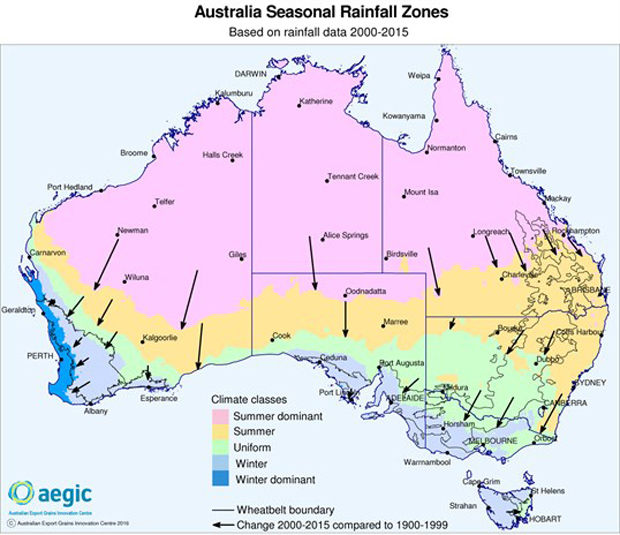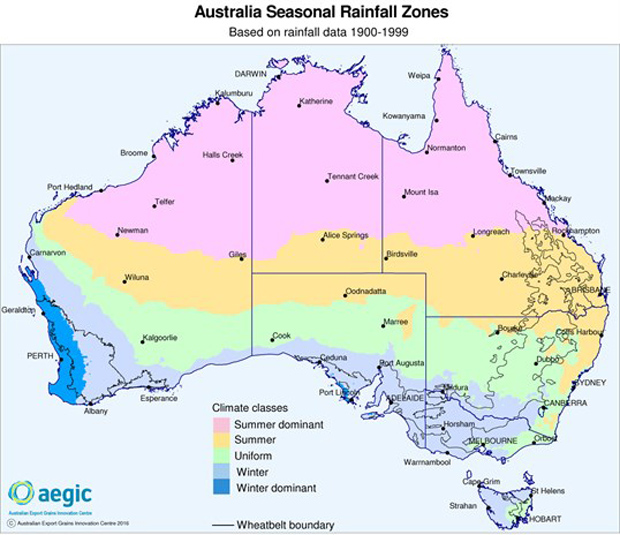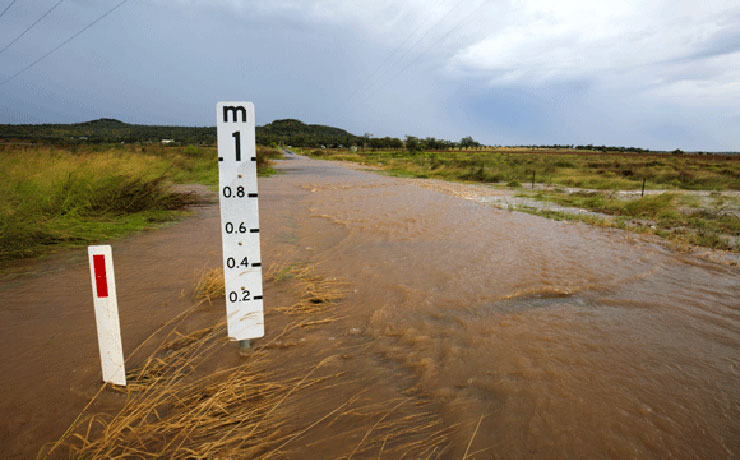
March 2, 2016
A new climate is emerging in Australia, according to maps released by the Australian Export Grains Innovation Centre (AEGIC).
AEGIC analysed data from more than 8000 Bureau of Meteorology stations around the country.
The group says traditional rainfall zones have changed significantly since 2000.
The findings were presented by AEGIC agro-meteorologist Dr David Stephens at the 2016 GRDC Perth Grains Research Update.
Dr Stephens said the new analysis revealed striking changes to the Australian climate over the past 16 years.
“Since 2000, there has been a general increase in summer rainfall across Australia, and a corresponding decrease in winter rainfall, leading to shifts in rainfall zones extending for hundreds of kilometres,” Dr Stephens said.
“Rainfall between May to October over much of the heavily populated regions of southern Australia has decreased 10-30 per cent, while summer rain has increased up to 40 per cent in some areas.
“This change in climate has major implications for farming and pastoral systems as the profitability of different crop types changes, disease risk changes, and the composition of rangeland grasses changes with stocking rates.”

A summary of the changes:
- For regions with a Mediterranean climate, winter (and winter dominant) rainfall zones are contracting in a south-westerly direction.
- In northern and eastern areas, summer (and summer dominant) rainfall zones are expanding southward.
- Between these regions, there is a uniform rainfall zone where summer and winter rainfall are similar.
- The southern boundary of this zone has shifted from southern/central NSW down into central Victoria and the Mallee region of south-east South Australia.
- In the south-west of Western Australia, a uniform rainfall zone has appeared along the eastern edge of the wheat-belt from Beacon to Southern Cross to Grass Patch.
- Reduced variability in some regions is due to the loss of wet years, as in south-west Australia, or more consistent average to above average rain, as in the north-western parts of the country and southern South Australia.
- Variability in annual rainfall has increased in inland Victoria, southern New South Wales and much of central Queensland.
Most rainfall zone boundaries have typically shifted 100-400km over the past 16 years.
The only expansion of the winter rainfall zone has occurred in southeast Tasmania where winter rainfall has become more reliable.
Dr Stephens said the analysis highlighted that the shift to earlier sowing of winter crops measured recently by AEGIC should continue because early sown crops take advantage of any additional summer soil moisture.
“They also experience a lower evaporative demand through the growing season, and are less affected by declining rain in October and rising spring temperatures,” he said.
“In pastoral regions in much of Western Australia, increasing summer rain with a reduction in rainfall variability has assisted perennial C4 (tropical) plants at the expense of C3 (temperate) grasses (especially in southern areas), while in central and northern Queensland, an increase in rainfall variability has been detrimental on pasture production and stocking rates”.
“Australia is going to need some of the most water-efficient farming systems in the world to mitigate the effects of a drier and warmer climate in Southern Australia. Research in this area is vital because Australian crop yields have been among the most affected by climate change compared to other grain exporting nations.”























